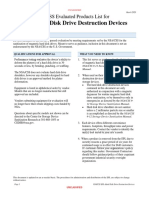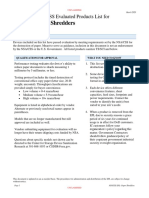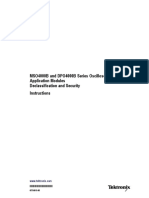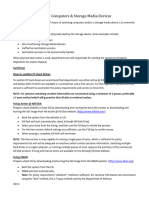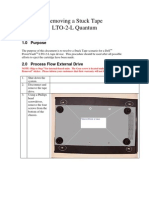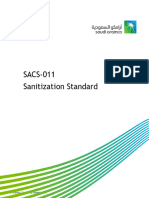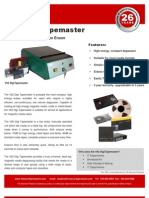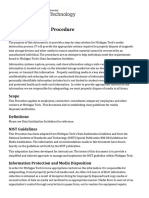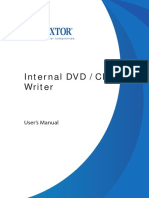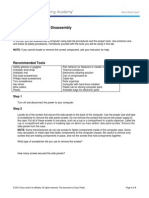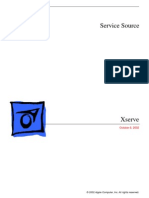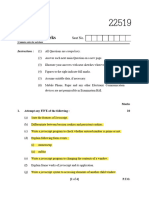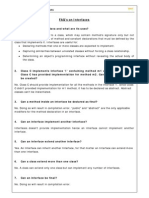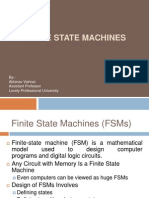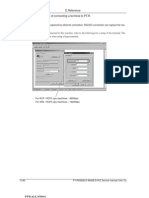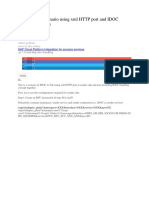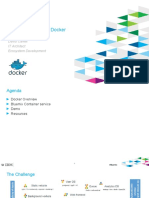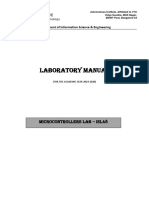NSA/CSS
STORAGE DEVICE DECLASSIFICATION MANUAL
(This Manual 912 supersedes NSA/CSS Manual 1302, dated 10 November 2000.)
PROCEDURES
1. Guidance for the sanitization, declassification, and release of IS storage devices not
covered by this document may be obtained by submitting all pertinent information to NSA/CSS
(Attn: LL43 Media Technology Center, 3016881053).
MAGNETIC STORAGE DEVICES
2. Magnetic Tapes
a. Sanitization: Sanitize magnetic tapes in accordance with either of the following
procedures. Remove all labels or markings that indicate previous use or classification.
1) Degaussing: Degauss using an NSA/CSS evaluated degausser per
Reference a.
2) Incineration: Incinerate magnetic tape in a licensed incinerator in
accordance with the procedures established for the controlled destruction of
classified or sensitive materials.
b. Declassification: Declassify magnetic tapes only after approved verification
and review procedures are completed per Reference b.
c. Release: Unless otherwise specified by the appropriate IS Security Officer (or
equivalent), declassified magnetic tapes may be released for disposal or recycling only
after sanitization procedures and a declassification review have been completed.
3. Magnetic Disks: Magnetic disks include hard disk drives and diskettes.
a. Hard Disk Drives
1) Sanitization: Sanitize hard disk drives using one of the following
procedures. Remove all labels or markings that indicate previous use or
classification.
a) Sanitization with Automatic Degausser: (1) Remove the hard
disk drive from the chassis or cabinet; (2) remove any steel shielding
materials or mounting brackets which may interfere with magnetic fields;
(3) place the hard disk drive in an NSA/CSS evaluated degausser per
1
� Reference a and erase. Although not required, it is highly recommended
that the hard disk drive be physically damaged prior to release.
NOTE – ERASURE OF HARD DISK DRIVES CAUSES PERMANENT
DAMAGE THAT PROHIBITS THEIR CONTINUED USE.
b) Sanitization with Degaussing Wand: Sanitize hard disk drives
by disassembling the device and erasing all surfaces of the enclosed
platters with an NSA/CSS evaluated handheld degaussing wand per
Reference a. Although not required, it is highly recommended that the
hard disk drive be physically damaged prior to release.
NOTE – ERASURE OF HARD DISK DRIVES CAUSES PERMANENT
DAMAGE THAT PROHIBITS THEIR CONTINUED USE.
c) Sanitization by Incineration: Incinerate hard disk drives in a
licensed incinerator in accordance with the procedures established for the
controlled destruction of classified or sensitive materials.
2) Declassification: Declassify hard disk drives only after approved
verification and review procedures are completed per Reference b.
3) Release: Unless otherwise specified by the appropriate IS Security
Officer (or equivalent), declassified hard disk drives may be released for disposal
or recycling only after sanitization procedures and a declassification review have
been completed.
b. Diskettes
1) Sanitization: Sanitize diskettes by degaussing, shredding, or
incineration. Remove all labels or markings that indicate previous use or
classification.
a) Sanitization by Degaussing: Degauss the diskettes in an
NSA/CSS evaluated degausser per Reference a.
b) Sanitization by Shredding: Shred diskettes using an NSA/CSS
evaluated high security crosscut paper shredder, per Reference e. Remove
diskette cover and metal hub prior to shredding.
c) Sanitization by Disintegration: Disintegrate diskettes using an
NSA/CSS evaluated high security disintegrator per Reference d.
2
� d) Sanitization by Incineration: Incinerate diskettes in a licensed
incinerator in accordance with the procedures established for the
controlled destruction of classified or sensitive materials.
2) Declassification: Declassify diskettes only after approved verification
and review procedures are completed per Reference b.
3) Release: Unless otherwise specified by the appropriate IS Security
Officer (or equivalent), declassified diskettes may be released for disposal or
recycling only after sanitization procedures and a declassification review have
been completed.
OPTICAL STORAGE DEVICES
4. Optical storage devices include Compact Disks (CD) and Digital Versatile Disks
(DVD)
a. Sanitization: Sanitize optical storage devices using one of the following
procedures. Remove all labels or markings that indicate previous use or classification.
1) Sanitization by Grinding: Use an NSA/CSS evaluated optical storage
device grinder, per Reference c, to remove the information bearing layers of only
CD storage devices. DVD’s cannot be sanitized by this method since the
information bearing layers are sandwiched in the center.
2) Sanitization by Shredder or Disintegrator: Use an NSA/CSS evaluated
optical storage device shredder per Reference c, or disintegrator per Reference d,
to reduce CD and DVD storage devices into particles that have nominal edge
dimensions of 5 millimeters or less and surface area of 25 square millimeters or
less.
3) Sanitization by Embossing/Knurling: Use an NSA/CSS evaluated
optical storage device embosser/knurler, per Reference c, for CD and DVD
storage devices.
4) Sanitization by Incineration: Incinerate optical storage devices in a
licensed incinerator in accordance with the procedures established for the
controlled destruction of classified or sensitive materials. Material must be
reduced to white ash.
b. Declassification: Declassify optical storage devices only after approved
verification and review procedures are completed per Reference b.
3
� c. Release: Unless otherwise specified by the appropriate IS Security Officer (or
equivalent), declassified optical storage devices may be released for disposal or recycling
only after sanitization procedures and a declassification review have been completed.
SOLID STATE STORAGE DEVICES
5. Solid State Storage Devices include Random Access Memory (RAM), Read Only
Memory (ROM), Field Programmable Gate Array (FPGA), Smart Cards, and Flash Memory.
a. Sanitization: Sanitize solidstate devices with the following procedures or
sanitize by smelting in a licensed furnace at 1,600 degrees Celsius or higher or
disintegrate into particles that are nominally 2 millimeter edge length in size using an
NSA/CSS evaluated disintegrator per Reference d. Remove all labels or markings that
indicate previous use or classification.
1) DRAM and SRAM: Sanitize DRAM and SRAM by removing the
power. Once power is removed, sanitization is instantaneous. Or, sanitize
functioning DRAM and SRAM by overwriting all locations with a known
unclassified pattern. Verify the overwrite procedure by randomly rereading the
overwritten information to confirm that only the known pattern can be recovered.
2) Ferroelectric Random Access Memory (FRAM) and Magnetic
Random Access Memory (MRAM) (NonVolatile): Sanitize functioning FRAM
and MRAM by overwriting all locations with a known unclassified pattern.
Verify the overwrite procedure by randomly rereading the overwritten
information to confirm that only the known pattern can be recovered.
3) EPROM and UVEPROM: Sanitize EPROM and UVEPROM by
performing an ultraviolet erase according to the manufacturer's recommendations,
but increase the time requirement by a factor of three. Next, overwrite all bit
locations with a known unclassified pattern.
4) EEPROM: Sanitize EEPROM by overwriting all locations with a
known unclassified pattern. Verify the overwrite procedure by randomly re
reading the overwritten information to confirm that only the known pattern can be
recovered.
5) PROM: Sanitize only by smelting.
6) FPGA (NonVolatile): Sanitize FPGA by overwriting all locations with
a known unclassified pattern. Verify the overwrite procedure by randomly re
reading the overwritten information to confirm that only the known pattern can be
recovered.
4
� 7) FPGA (Volatile): Sanitize FPGA by removing the power. Once power
is removed, sanitization is instantaneous.
8) Smart Cards: Sanitize Smart Cards by shredding with a strip shredder
or with scissors.
a) Sanitization with a Strip Shredder: A strip shredder with a
maximum width of 2 millimeters will destroy the microchip, barcode,
magnetic strip and written information on the Smart Card. Smart Cards
must be inserted diagonally into the strip shredder at a 45degree angle for
proper sanitization.
NOTE: A CROSS CUT SHREDDER WILL NOT SANITIZE SMART
CARDS.
b) Sanitization with Scissors: Cut the Smart Card into strips
diagonally at a 45degree angle, insuring that the microchip is cut through
the center. Insure that the barcode, magnetic strip, and written information
are cut into several pieces and the written information is unreadable.
9) Flash Memory: Sanitize EEPROM by overwriting all locations with a
known unclassified pattern. Verify the overwrite procedure by randomly re
reading the overwritten information to confirm that only the known pattern can be
recovered.
b. Declassification: Declassify solidstate storage devices only after
approved verification and review procedures are completed per Reference b.
c. Release: Unless otherwise specified by the appropriate IS Security Officer (or
equivalent), declassified solidstate storage devices may be released for disposal or
recycling only after sanitization procedures and a declassification review have been
completed.
HARD COPY STORAGE DEVICES
6. Hard Copy Storage Devices include paper, microforms, and monitors with burnin.
a. Sanitization: Sanitize hard copy storage devices with the following procedures.
1) Sanitize paper by burning, chopping, crosscut shredding using an
NSA/CSS evaluated crosscut shredder, per Reference e, pulverizing, or wet
pulping. When burned, material residue must be reduced to white ash. When
chopping, shredding, pulverizing, or wet pulping, material residue must be
reduced to pieces 5 millimeters square or smaller.
5
� 2) Sanitize microforms (microfilm, microfiche, or other reduced image
photo negatives) by burning or by chemical means, such as immersion in
household bleach (i.e., sodium hypochlorite) for film masters and acetone or
methylene chloride for diazo reproductions. When burned, material residue must
be reduced to white ash.
3) Sanitize monitors exhibiting burnin by destroying the surface of the
monitor into pieces no larger than 5 centimeters square.
b. Declassification: Declassify hard copy storage devices only after approved
verification and review procedures are completed per Reference b.
c. Release: Unless otherwise specified by the appropriate IS Security Officer (or
equivalent), declassified hard copy storage devices may be released for disposal or
recycling only after sanitization procedures and a declassification review have been
completed.
RESPONSIBILITIES
7. Logistics Services Media Technology Center shall provide technical guidance for the
sanitization, declassification, and release of IS storage devices.
8. NSA/CSS and all elements using this manual shall:
a. Protect classified or sensitive information, and make final decisions to
declassify or release IS storage devices or refer to their IS security officer for guidance;
b. Establish and maintain a compilation of guidance and procedures for the
sanitization, declassification, and release of classified or sensitive information on IS
storage devices; and
c. Comply with the Director of Central Intelligence Directive (DCID) 6/3,
“Protecting Sensitive Compartment Information Within Information Systems Manual,”
dated 11 December 2003 (Reference f).
REFERENCES
9. References:
a. NSA/CSS Degausser Evaluated Products List.
b. NSA/CSS Manual 1301, Annex D, “Declassification & Release of NSA/CSS
Information Storage Media”.
c. NSA/CSS Specification 0402, “Optical Media Destruction Devices,” and EPL
0402 Evaluated Products List.
6
� d. NSA/CSS Specification 0202, “High Security Disintegrators,” and EPL 0202
Evaluated Products List.
e. NSA/CSS Specification 0201, “High Security Crosscut Paper Shredders”.
f. Director of Central Intelligence Directive (DCID) 6/3, “Protecting Sensitive
Compartment Information Within Information Systems Manual”.
DEFINITIONS
10. BurnIn A tendency for an image that is shown on a display over a long period of time to
become permanently fixed on the display. This is most often seen in emissive displays such as
Cathode Ray Tube (CRT) and Plasma, because chemical changes can occur in the phosphors
when exposed repeatedly to the same electrical signals.
11. Coercive Force – A negative or reverse magnetic force applied for the purpose of reducing
magnetic flux density.
12. Declassification An administrative decision/action, based on a consideration of risk by the
owner, whereby the classification of a properly sanitized storage device is downgraded to
UNCLASSIFIED.
13. Degausser An electrical device or permanent magnet assembly which generates a coercive
magnetic force for the purpose of degaussing magnetic storage devices or other magnetic
material.
14. Degaussing (or Demagnetizing) Process for reducing the magnetization of a magnetic
storage device to zero by applying a reverse (coercive) magnetizing force, rendering any
previously stored data unreadable and unintelligible, and ensuring that it cannot be recovered by
any technology known to exist.
15. Information System (IS) Storage Devices The physical storage devices used by an IS upon
which data is recorded.
16. Recycling – End state for IS storage devices processed in such a way as to make them ready
for reuse, adapt them to a new use, or to reclaim constituent materials of value.
17. Sanitization The removal of information from the storage device such that data recovery
using any known technique or analysis is prevented. Sanitization includes the removal of data
from the storage device, as well as the removal of all labels, markings, and activity logs. The
method of sanitization varies depending upon the storage device in question, and may include
degaussing, incineration, shredding, grinding, embossing, chemical immersion, etc.
7




